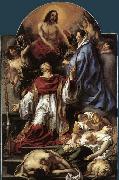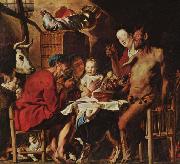All JORDAENS, Jacob Oil PaintingsFlemish painter (b. 1593, Antwerpen, d. 1678, Antwerpen). |
|||
 |
|||
|
|
|
||||||||||
|
|
||||||||||
|
St Charles Cares for the Plague Victims of Milan Gemälde IDENTIFIZIERUNG:: 63977 |
St Charles Cares for the Plague Victims of Milan 1655 Oil on canvas Sint-Jacobskerk, Antwerp , Artist: JORDAENS, Jacob , St Charles Cares for the Plague Victims of Milan , 1651-1700 , Flemish , painting , religious 1655 Oil on canvas Sint-Jacobskerk, Antwerp , Artist: JORDAENS, Jacob , St Charles Cares for the Plague Victims of Milan , 1651-1700 , Flemish , painting , religious |
|||||||||
|
|
||||||||||
|
|
Satyr and the Peasant Gemälde IDENTIFIZIERUNG:: 66509 |
Satyr and the Peasant 1st half of 17th century Oil on canvas 174 ?? 204 cm (68.50 ?? 80.31 in) 1st half of 17th century Oil on canvas 174 ?? 204 cm (68.50 ?? 80.31 in) |
||||||||
|
|
||||||||||
| VORHERIGER KÜNSTLER NÄCHSTER KÜNSTLER | ||||||||||
|
|
||||||||||
| JORDAENS, Jacob | ||||||||||
| Flemish painter (b. 1593, Antwerpen, d. 1678, Antwerpen). | ||||||||||
|
|
||||||||||
|
KONTAKTIEREN Sie UNS |







